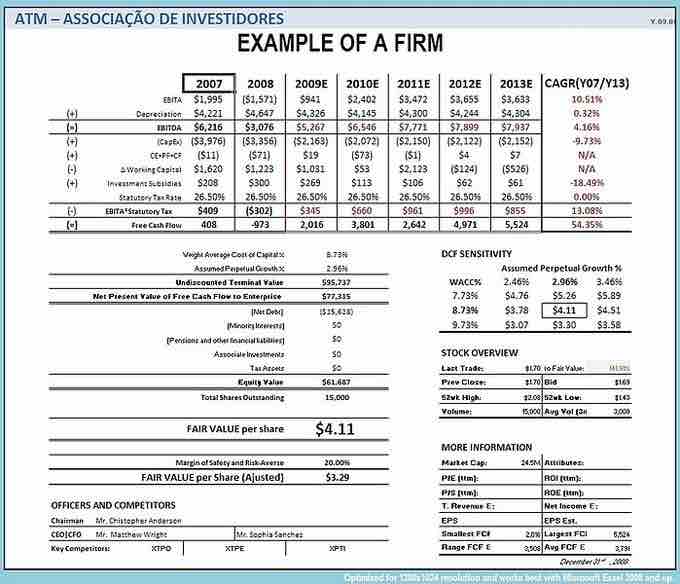In corporate finance, free cash flow (FCF) is cash flow available for distribution among all the security holders of an organization. They include equity holders, debt holders, preferred stock holders, convertible security holders, and so on. There are four different methods for calculating free cash flows.
1. Free cash flows = EBIT x (1 - Tax rate) + Depreciation & Amortization - Changes in Working Capital - Capital Expenditure
2. Free cash flows = Net profit + Interest expense - Net Capital Expenditure (CAPEX) - Net change in Working Capital - Tax shield on Interest Expense
Where Net Capital Expenditure (CAPEX) = Capex - Depreciation & Amortization and Tax Shield = Net Interest Expense X Effective Tax Rate
3. When Profit after Tax and Debit/Equity ratio (d) is available,
Free cash flows = Profit after Tax - Changes in Capital Expenditure x (1-d) + Depreciation & Amortization x (1-d) - Changes in Working Capital x (1-d)
4. Cash flows from operations = Earnings before Interest and Tax x (1-Tax rate) + Depreciation & Amortization - Changes in Working Capital
Free cash flows = Cash flows from operations - Capital Expenditure ""

Free Cash Flow
An example of calculating free cash flow.
Free cash flow measures the ease with which businesses can grow and pay dividends to shareholders. Even profitable businesses may have negative cash flows. Their requirement for increased financing will result in increased financing cost reducing future income.
There are two differences between net income and free cash flow. The first is the accounting for the consumption of capital goods. The net income measure uses depreciation, while the free cash flow measure uses last period's net capital purchases. The second difference is that the free cash flow measurement deducts increases in net working capital, where the net income approach does not. Some investors prefer using free cash flow instead of net income to measure a company's financial performance because free cash flow is more difficult to manipulate than net income.